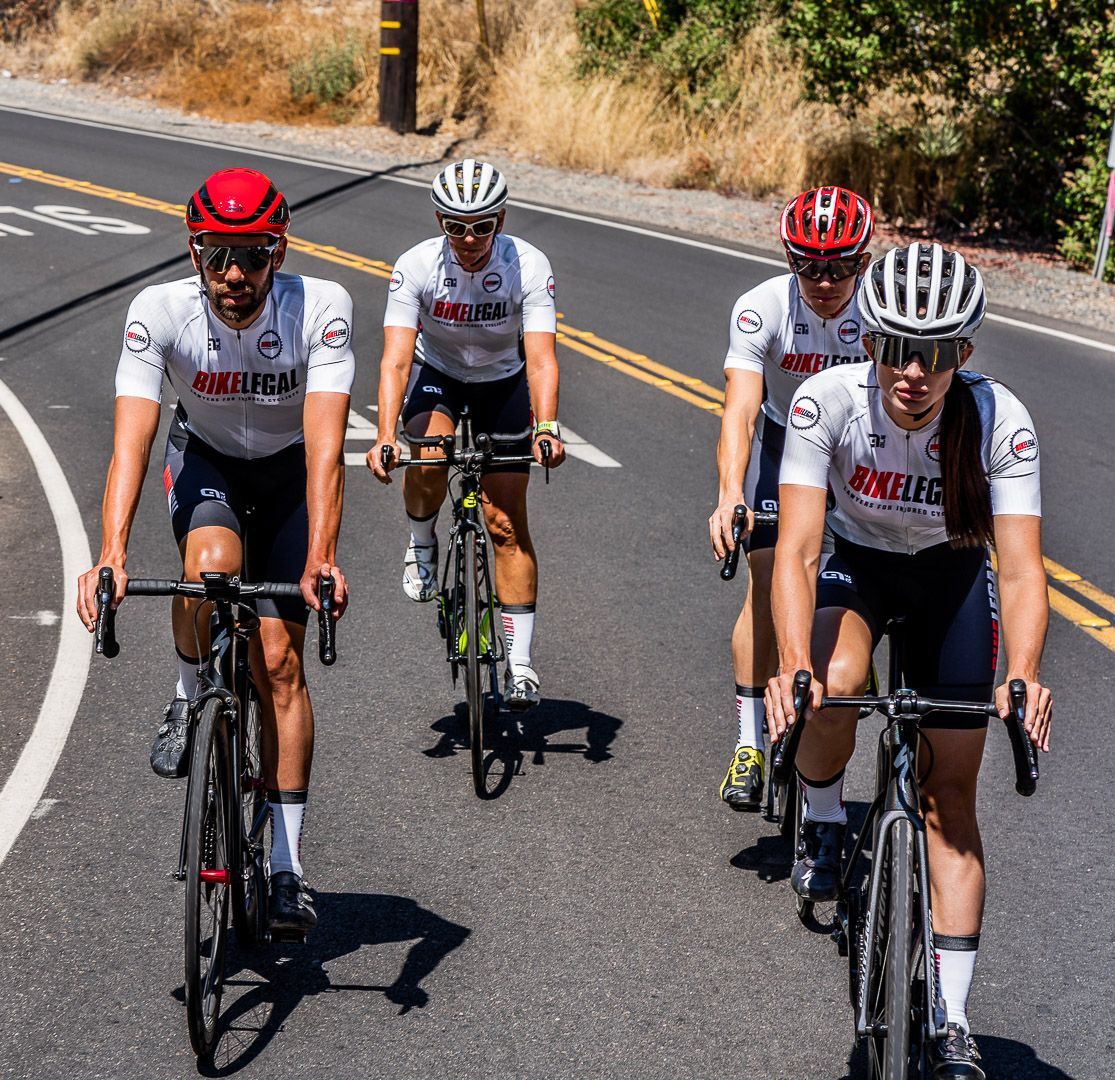Complete Guide to Bicycling Outdoors in Winter: From Beginner to Pro [2025]
Follow us on
social media!
Think winter puts your cycling adventures on hold? Not so fast. Winter riding can actually be incredibly rewarding, with fewer crowds and a unique sense of accomplishment. However, the thought of icy roads and freezing temperatures can be intimidating.
Many cyclists worry about safety, staying warm, and damaging their bikes. We get it. But don't let those fears keep you indoors.
This guide explains everything you need to know about winter cycling. Get ready to beat the cold and become a true winter warrior.
TL;DR: Winter Cycling Wisdom in a Nutshell
Here's the gist of this epic winter cycling guide:
- Getting Started: Embrace the challenge, start slow, and prioritize safety.
- Bike Prep: Winterize your bike with proper lubrication, tires, and fenders.
- Clothing and Gear: Layer up with moisture-wicking fabrics and invest in key gear like gloves, hats, and waterproof outerwear.
- Riding Techniques: Adapt your riding style to winter conditions and be aware of potential hazards.
- Route Planning: Choose safe, well-maintained routes and be prepared for alternative options.
- Practical Considerations: Store your bike properly, maintain it regularly, and factor in winter-specific costs.
- Advanced Topics: Explore fat biking, extreme weather riding, or long-distance winter adventures.
How to Start Winter Cycling Safely: Beginner Tips
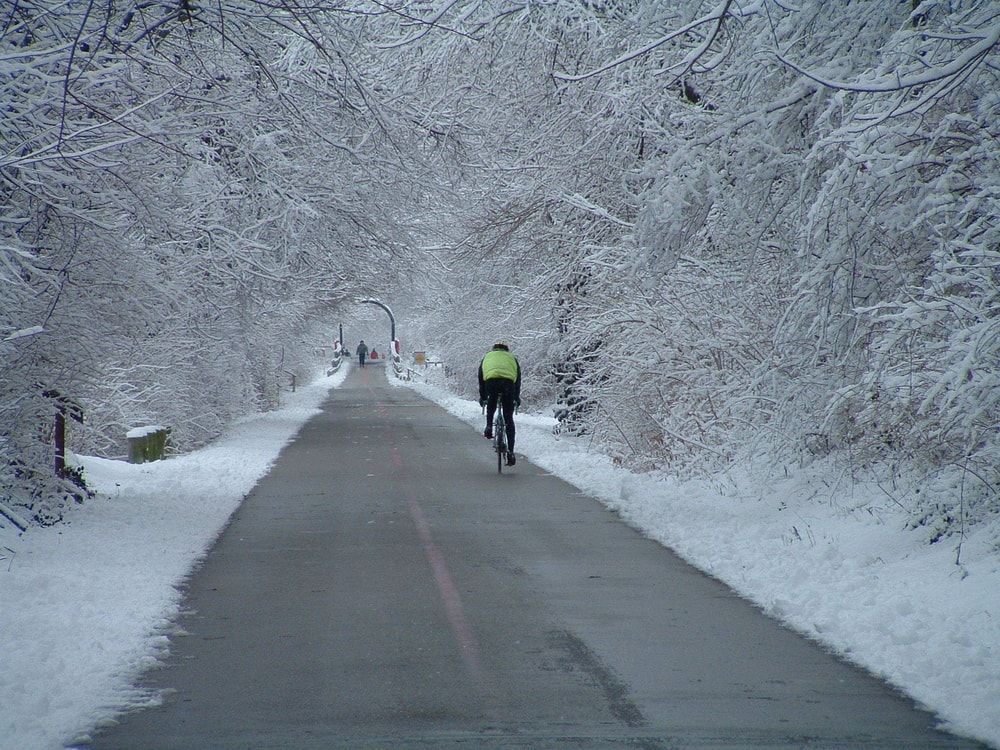
So you're ready to take on the winter wonderland on two wheels. Awesome. But before you hit the icy streets, let's make sure you're truly prepared – both mentally and physically. Winter cycling presents unique challenges, but with the right mindset and preparation, you can have a safe and enjoyable experience.
Mindset Matters
- Embrace the elements: Yes, it's colder, and the conditions might be less than ideal. But don't let that dampen your enthusiasm. Focus on the joy of cycling and the unique beauty of a winter landscape. Remember that feeling of freedom and the wind in your face? It's still there, even if you're bundled up a bit more.
- Stay positive: Winter riding has its own set of challenges—icy patches, reduced visibility, and the occasional snow drift. But with a positive attitude and a willingness to adapt, you can overcome these obstacles and have a great time.
Start Slow and Steady
- Short rides first: Don't jump into a century ride on your first winter outing. Begin with shorter, familiar routes to get a feel for riding in colder temperatures and on potentially slippery surfaces. This allows you to gradually acclimate to the conditions and build your confidence.
- Gradual increase: As you become more comfortable, slowly increase your distance and intensity. Listen to your body, and don't push yourself too hard, especially in the beginning. Think of it like any other type of training—gradual progression is key to avoiding injury and burnout.
Set Realistic Expectations
- No need for speed: You probably won't be setting any personal speed records when it's icy or snowy. And that's perfectly fine. Winter cycling is more about enjoying the ride and staying active than pushing your limits.
- Consistency is key: Focus on getting out there regularly, even if it's just for a short spin around the neighborhood. Consistency will help you maintain your fitness and keep your cycling skills sharp throughout the winter months.
Safety First
- Essential gear: Safety should always be your top priority. Always wear a helmet, and use bright lights (both front and rear) to increase your visibility, especially in low-light conditions. Consider investing in reflective clothing or accessories to make yourself even more visible to motorists.
- Bike maintenance: Make sure your bike is in top condition for winter riding. This includes checking your brakes, tires, and gears, and making sure everything is properly lubricated to withstand the harsh weather.
- Know when to stop: If the weather conditions are truly treacherous—heavy snow, ice storms, or extremely low temperatures—don't hesitate to opt for an indoor trainer instead. There's no shame in prioritizing safety and waiting for better conditions.
Also Read: Top 5 Best Bike Locks of 2024 & How to Choose the Right One
Essential Winter Bike Preparation
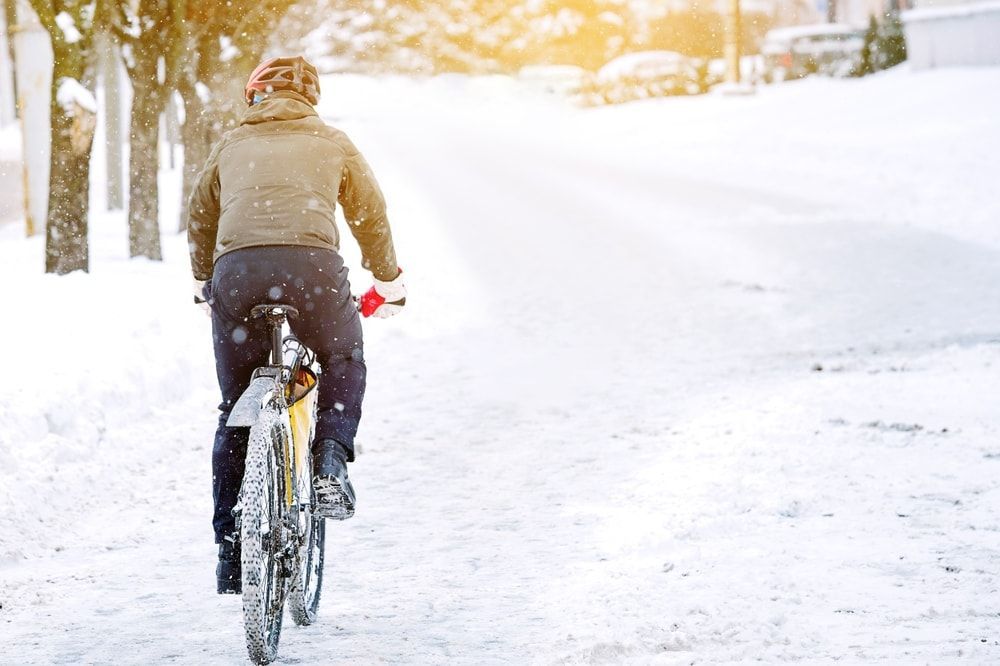
So, you're mentally prepared and ready to roll. But what about your trusty steed? Winter throws some curveballs at your bike, so let's make sure it's up to the challenge.
Winterizing Your Ride
Think of winterizing your bike, like giving it a cozy sweater and a warm hat. Here's the lowdown:
- Lubricate everything: Water and salt are your bike's worst enemies in winter. Keep things moving smoothly by using a wet lube specifically designed for cold, wet conditions. Pay special attention to your chain, derailleurs, brakes, and cables.
- Clean your bike regularly: Wipe down your bike after every ride to remove any salt, grime, or slush. This prevents corrosion and keeps your components in good working order.
- Store your bike properly: If possible, store your bike indoors in a dry place. If you have to store it outside, cover it with a waterproof bike cover to protect it from the elements.
Tire Talk: Studded vs. Regular
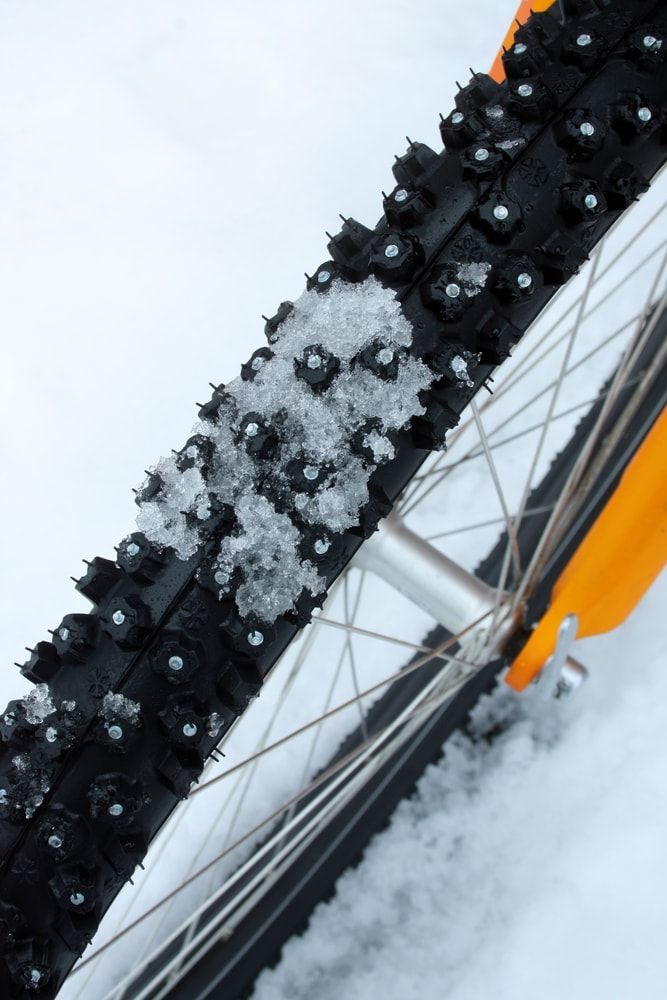
Your tires are your connection to the road, and in winter, that connection becomes even more critical. Here's the deal:
- Studded tires: These bad boys are like winter boots for your bike. They provide superior grip on ice and packed snow thanks to tiny metal studs embedded in the tread. If you live in an area with consistently icy conditions, studded tires are a game-changer.
- Regular tires: If your winters are milder with less ice, you can often get away with regular tires with a good tread pattern. Just make sure they're properly inflated (you might need to adjust the pressure in colder temperatures).
Consider running wider tires in winter. They provide a larger contact patch with the ground, improving stability and traction.
Winter Maintenance
Winter takes a toll on your bike, so regular maintenance is crucial. Here's what to keep an eye on:
- Brakes: Make sure your brakes are in top condition and adjust them as needed. Wet and icy conditions can reduce braking power, so you want to make sure they're responsive.
- Drivetrain: Clean and lube your chain regularly to prevent rust and wear. Consider replacing your chain more often in winter, as the harsh conditions can cause it to wear out faster.
- Cables and housing: Keep your cables and housing clean and lubricated to ensure smooth shifting and braking. Replace them if they show signs of fraying or damage.
Bicycle Fenders to Keep Dry and Clean
Fenders are your best friend in winter. They block snow, slush, and road spray, keeping you and your bike cleaner and drier. Trust us, you'll appreciate this when it's freezing cold.
- Full fenders: These provide the most coverage, keeping you and your bike cleaner and drier.
- Clip-on fenders: These are a good option if you don't want to permanently install fenders. They're easy to attach and remove as needed.
Light It Up
Visibility is key in winter, especially with shorter days and gloomy weather. Here's how to light up the night:
- Front light: A bright front light is essential for seeing where you're going. Look for a light with at least 500 lumens.
- Rear light: A flashing rear light makes you more visible to traffic approaching from behind.
- Additional lights: Consider adding extra lights to your helmet or clothing for even more visibility.
Proper bike maintenance is not just about performance; it's about safety. A well-maintained bike is more reliable and less likely to have mechanical issues that could lead to an accident.
Clothing and Gear to Stay Warm Without the Bulk
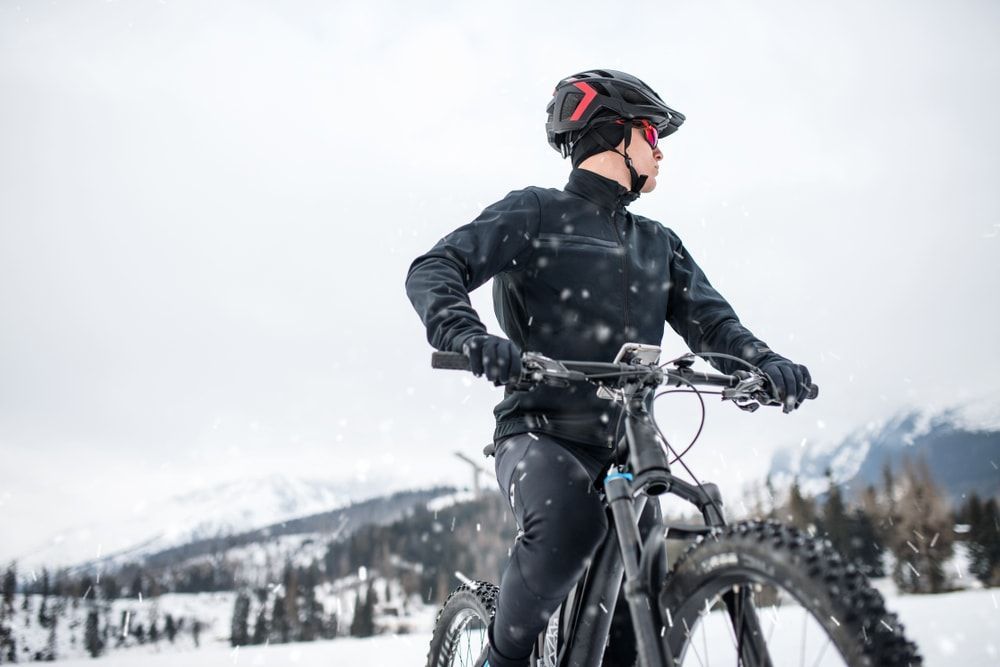
Dressing for winter cycling is a bit like dressing for a polar expedition, but with more emphasis on flexibility and breathability. Let's break it down:
Layering Is The Key to Winter Warmth
Think of your clothing like a high-tech onion – multiple layers working together to keep you warm, dry, and comfortable. Here's the winning formula:
- Base layer: This is your next-to-skin layer, wicking away sweat to keep you dry. Look for moisture-wicking fabrics like merino wool or synthetic materials. Avoid cotton, as it traps moisture and can make you feel cold and clammy.
- Mid layer: This layer provides insulation, trapping warm air close to your body. Fleece, wool, or down are good options.
- Outer layer: This is your shield against the elements, protecting you from cold wind, rain, and slushy snow. Look for a waterproof and windproof jacket, preferably with breathable features to prevent overheating.
It's better to start slightly underdress than overdress. You can always add layers if you get cold, but if you start out too warm, you'll end up sweating and feeling chilled later on.
Winter Cycling Essentials
Besides the basic layering system, here are some key pieces of gear to keep you toasty and safe:
- Headwear: A good hat or headband covers your ears and keeps your head warm. Consider a balaclava for extra face protection in extreme cold.
- Gloves: Invest in a pair of insulated, waterproof gloves. Look for gloves with good dexterity so you can still operate your brakes and shifters easily.
- Footwear: Keep your feet warm and dry with waterproof cycling shoes or booties. Consider adding toe covers for extra insulation.
- Eye protection: Clear glasses or goggles protect your eyes from wind, falling snow, and debris. They also help improve visibility in low-light conditions.
Budget vs. Premium: Finding the Right Balance
Winter cycling gear can range from budget-friendly to "did I just buy a small car?" expensive. Here's how to find the sweet spot:
- Prioritize quality: Invest in high-quality base layers and outer layers. These are the most important for staying warm and dry.
- Shop around: Compare prices and look for sales and discounts.
- Consider used gear: You can often find great deals on used winter cycling gear. Just make sure it's in good condition.
Location: Dressing for Your Climate
Winter in Florida is a bit different than winter in Alaska. Here's how to adjust your gear based on your local climate:
- Mild winters: You might be able to get away with lighter layers and less specialized gear.
- Moderate winters: A good layering system with a waterproof outer layer is essential.
- Extreme winters: Invest in heavier insulation, windproof layers, and possibly even heated gear.
Gear Storage: Keeping It Organized
Winter cycling gear can be bulky, so it's important to have a good storage system. Here are a few ideas:
- Dedicated drawer or bin: Keep all your winter cycling gear in one place so it's easy to find.
- Vacuum-sealed bags: These are great for storing bulky items like jackets and pants.
- Over-the-door organizer: This is a good option for storing smaller items like gloves, hats, and buffs.
Staying warm and comfortable is crucial for enjoying your winter rides. But it's also important to be prepared for the unexpected. A sudden change in weather or an unforeseen mechanical issue could leave you stranded and vulnerable. Always carry a fully charged cell phone and let someone know your route and expected return time.
Winter Cycling Safety Tips and Riding Techniques
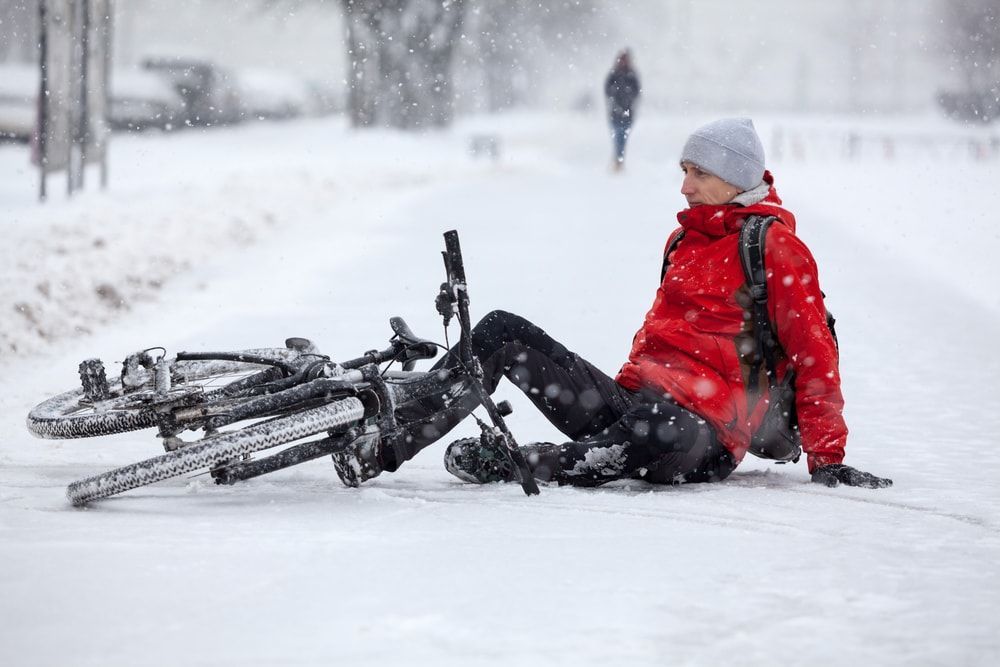
Winter riding requires different skills than cruising around in the summer sun. Let's share a few tips to keep you upright and safe.
Winter Riding 101
- Slow and steady: Reduce your speed and avoid sudden movements. This gives you more time to react to unexpected hazards.
- Smooth operator: Be gentle with your braking and steering. Sudden movements can cause you to lose traction on slippery surfaces.
- Relax and stay loose: Keep your body relaxed and your grip on the handlebars light. Tensing up can make you more likely to overreact and lose control.
Handling Different Conditions
Winter throws a variety of surfaces your way, each with its own challenges. Here's how to handle them:
- Ice: If you encounter ice, try to ride over it in a straight line, avoiding sudden turns or braking. If you must turn or brake, do so very gently.
- Snow: Ride in the tracks of other vehicles if possible. This provides a more stable surface. Be aware that fresh snow can conceal hidden obstacles.
- Slush: Slush can be unpredictable, so ride through it cautiously. Be aware that it can splash up (or splash others!) and reduce your visibility.
Avoiding Winter Trouble
Winter presents some unique hazards for cyclists. Here's how to stay out of trouble:
- Black ice: This is a thin, transparent layer of ice that can be difficult to see. Be extra cautious in shaded areas and on bridges, where black ice is more likely to form.
- Reduced visibility: Shorter days and gloomy weather can make it harder for drivers to see you. Always use lights, wear bright clothing, and be extra cautious at intersections.
- Cold temperatures: Hypothermia and frostbite are real dangers in winter. Dress warmly, take breaks to warm up, and know the signs of cold-related illnesses.
Emergency Preparedness to Be Ready for Anything
It's always better to be safe than sorry. Here's how to be prepared for emergencies:
- Carry a repair kit: Include essentials like a spare tube, tire levers, a multi-tool, and a pump.
- Pack extra layers: Bring an extra layer of clothing in case you get cold or wet.
- Tell someone your route: Let someone know where you're going and when you expect to be back.
- Carry a charged phone: In case of an emergency, you'll be able to call for help.
Route Planning and Navigation
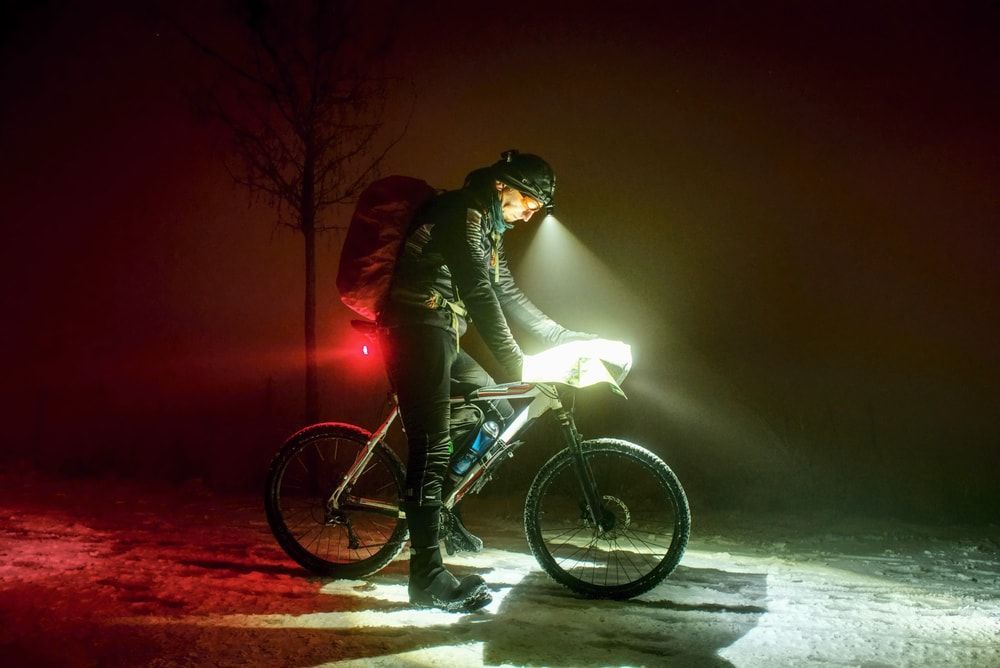
Choosing the right route can make or break your winter cycling experience. Here's how to navigate those snowy streets like a pro:
Winter-Friendly Routes
- Main roads: Prioritize major roads that are more likely to be plowed and salted.
- Bike paths: Many cities have dedicated bike paths that are cleared of snow and ice.
- Low-traffic areas: Opt for routes with less traffic to reduce your risk of accidents.
- Sunny spots: Choose routes that get more sunlight, as these areas are less likely to be icy.
Road Conditions
- Check the forecast: Pay attention to the weather forecast before heading out. Be aware of potential hazards like black ice, freezing rain, or heavy snow.
- Use online resources: Many cities have websites or apps that provide real-time information on road conditions.
- Ask local cyclists: Connect with other cyclists in your area for insights on the best winter routes.
Winter Cycling Infrastructure
- Protected bike lanes: These offer a safer and more comfortable riding experience, separated from traffic.
- Winter maintenance: Look for routes with dedicated winter maintenance, such as snow removal and salting.
- Shared-use paths: These can be a good option if they are well-maintained in winter.
Alternative Routes
- Indoor cycling: If the weather is truly awful, consider hitting the indoor trainer or joining a spin class.
- Public transportation: Don't be afraid to use public transportation to get to and from your ride if conditions are unsafe.
- Explore new options: Winter can be a great time to explore new routes and discover hidden gems in your area.
Planning your winter cycling routes carefully is crucial for both safety and enjoyment. Always be aware of your surroundings, anticipate potential hazards, and be prepared to adjust your route if conditions change.
Practical Considerations: Winter Cycling Hacks
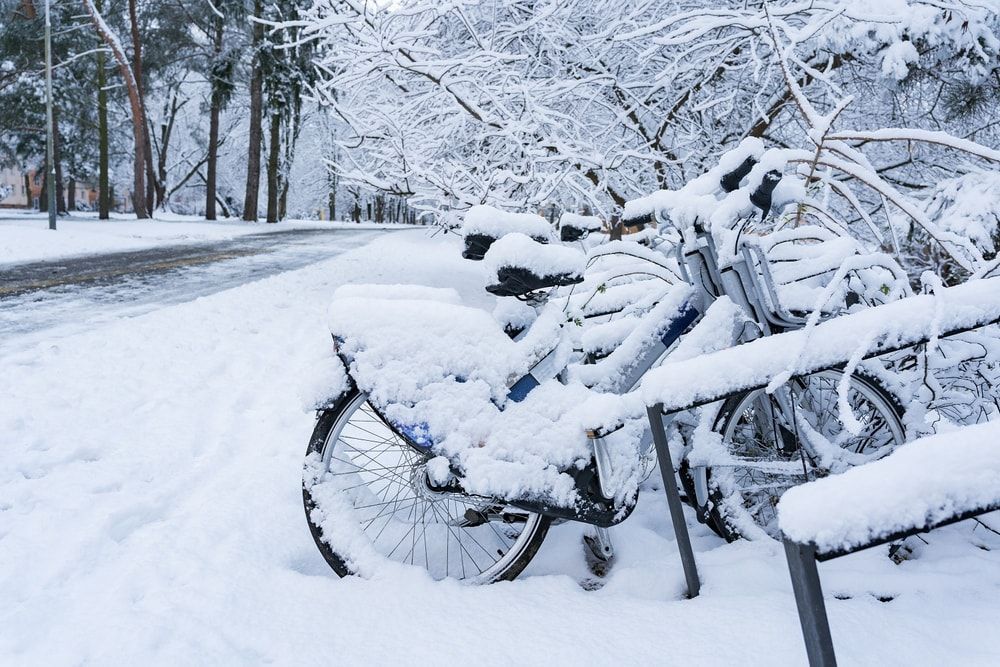
Beyond the gear and the grit, some practical things will make your winter cycling experience smoother. Let's get down to the nitty-gritty:
Bike Storage: Keeping Your Ride Happy
Where you store your bike in winter can significantly impact its lifespan. Ideally, keep it indoors in a dry, heated space to prevent rust and damage from the elements.
This could be your living room, garage, or even a spare bedroom. If outdoor storage is your only option, invest in a high-quality waterproof cover and consider bringing your bike inside during extreme weather like snowstorms or freezing rain.
For those in smaller spaces like apartments, get creative with storage. Wall mounts, ceiling hoists, or even hanging your bike from the balcony can free up valuable floor space.
- Wall mounts: These are a great way to store your bike vertically, taking up minimal space.
- Ceiling hoists: These allow you to lift your bike up and out of the way, perfect for low ceilings.
- Balcony storage: If you have a balcony, consider hanging your bike from a sturdy hook or bracket.
Winter Maintenance Routine
Winter takes a toll on your bike, so a good cleaning and maintenance routine is essential. After every ride, wipe down your bike to remove salt, grime, and moisture. This prevents corrosion and keeps your components in good working order. Every few weeks, give your bike a more thorough cleaning, paying special attention to the drivetrain, brakes, and bearings.
Pro Tip: A toothbrush is a great tool for getting into those hard-to-reach places on your bike.
If you're not comfortable doing your own maintenance, consider taking your bike to a professional mechanic for a winter tune-up. They can check for any potential problems and ensure your bike is ready for the harsh conditions.
Winter Cycling Costs
Winter cycling does come with some added expenses, but don't let that deter you. Here's a rough estimate of what you might spend:
- Gear: A good winter cycling outfit (base layers, mid-layers, outerwear, gloves, hat) could set you back anywhere from $200 to $500+, depending on the quality and brand.
- Maintenance: Budget around $50-$100 per season for cleaning supplies, lubes, and potential replacement parts like chains and brake pads.
- Indoor Cycling: If you opt for an indoor trainer, expect to spend $200-$1000+ for the trainer itself, plus potential subscription fees for online platforms like Zwift and accessories like a fan or sweat mat.
E-Bike Extras: Winterizing Your Electric Ride
E-bikes have some specific winter considerations:
- Battery care: Cold temperatures can significantly reduce battery performance. Always store your battery indoors in a warm place when not in use. If you're going for a long ride, consider bringing your battery inside during breaks to keep it warm.
- Tire pressure: E-bikes are heavier than regular bikes, so make sure your tires are properly inflated for optimal performance and range. Check your tire pressure regularly, as colder temperatures can cause the pressure to drop.
- Motor maintenance: Keep your motor clean and dry. Avoid riding through deep puddles or snow that could damage the motor. Check with your e-bike manufacturer for specific winter maintenance recommendations.
A Must Read: Everything You Need to Know About E-bikes (Electric Bicycles)
Winter cycling can be a rewarding experience, but it requires some extra preparation and planning. By taking care of your bike, staying on top of maintenance, and being mindful of the costs involved, you can enjoy a safe and enjoyable winter riding season.
Level Up Your Winter Riding With Advanced Cycling
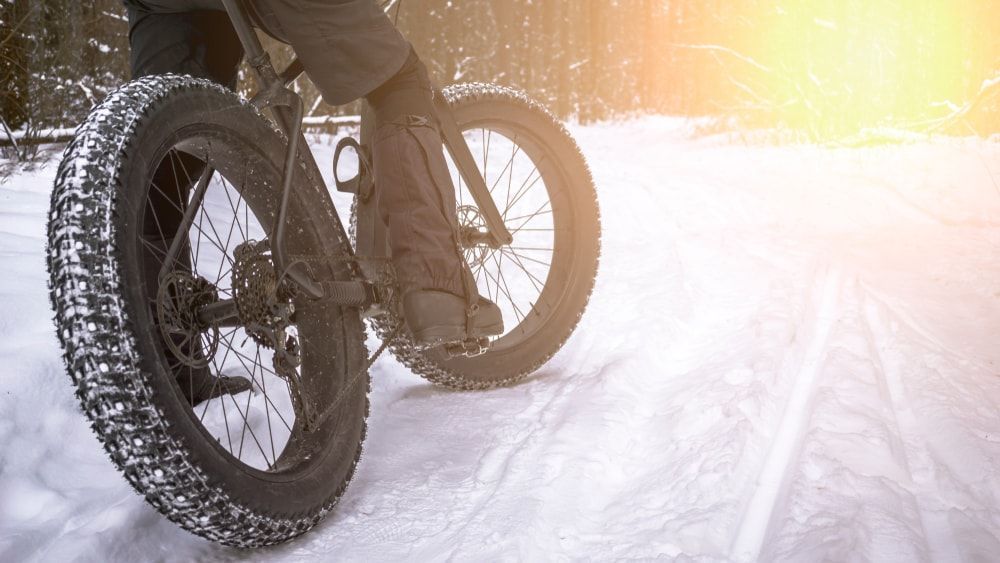
Ready to take your winter cycling to the next level? Let's explore some more advanced topics for those who crave a bigger challenge:
Consider Fat Biking to Conquer Any Terrain
Fat bikes are like the monster trucks of the cycling world. With their oversized tires and aggressive tread, they can tackle snow, sand, and anything in between. If you're looking for a truly adventurous winter riding experience, fat biking might be your jam.
- Where to ride: Look for trails specifically designed for fat bikes. Many ski resorts and parks offer groomed fat bike trails in winter.
- Gear up: You'll need a fat bike (obviously), warm clothing, and possibly even some specialized gear like pogies ( handlebar mittens) to keep your hands warm.
Extreme Weather Cycling: For the Truly Hardy
Think sub-zero temperatures, blizzard conditions, and icy winds. Extreme weather cycling is not for the faint of heart, but it can be an incredibly rewarding experience for those who are prepared.
- Safety first: This is serious business. Make sure you have the proper gear, knowledge, and experience before venturing out in extreme weather. Always let someone know your route and expected return time.
- Gear essentials: Invest in high-quality cold-weather gear, including a windproof and waterproof outer layer, insulated gloves and boots, and a balaclava for face protection.
Long-Distance Winter Riding for Epic Adventures
Want to test your limits? Long-distance winter riding can be an incredible challenge, both physically and mentally.
- Training: Build up your endurance gradually. Start with shorter rides and gradually increase your distance.
- Nutrition and hydration: Fuel your body properly with high-energy snacks and plenty of fluids. Dehydration can be a serious concern in cold weather.
- Safety: Be prepared for the unexpected. Carry a comprehensive repair kit, extra layers, and a fully charged phone.
Racing and Training in Winter to Stay Sharp Year-Round

Winter doesn't have to mean putting your cycling goals on hold. You can still race and train effectively, even in the colder months.
- Indoor Cycling: Utilize indoor trainers and online platforms like Zwift to maintain your fitness and stay motivated.
- Outdoor training: Embrace the challenge of winter riding. Focus on building strength and endurance with longer, slower rides.
- Race preparation: If you're planning to race in the spring, use the winter to build a solid base fitness.
Ready to Conquer the Winter Roads?
Don't let the cold put your cycling passion on ice! With the right preparation, gear, and mindset, you can enjoy biking year-round, even in snowy conditions.
Remember to dress in breathable, thin layers to keep your core warm, and ride defensively to stay safe on those slippery winter roads. Accept the challenge and reap the rewards of winter-long cycling adventures.
Here's a quick recap of the key takeaways:
- Be prepared: Get your bike and yourself ready for winter conditions.
- Stay safe: Prioritize safety with proper gear and riding techniques.
- Have fun: Embrace the challenge and enjoy the winter wonderland.
Ride Protected, Ride Safe with Bike Legal
At Bike Legal, we’re cyclists representing cyclists. With unmatched expertise in bicycle accident law and a deep understanding of cycling, we fight to secure justice and fair compensation for injured riders. Beyond legal representation, we’re passionate advocates for bicycle safety and education.
Request a free consultation by calling 877-BIKE LEGAL (877 245-3534)

FAQs
Is it okay to bike in the winter?
Absolutely. In fact, winter cycling can be incredibly rewarding. You'll enjoy a unique sense of accomplishment, and a whole new perspective on your usual routes. Just make sure you're properly prepared with the right gear and mindset. Always prioritize safety first!
How cold is too cold for bike riding?
It’s too cold to bike when you’re no longer comfortable. With proper gear, many cyclists ride in temperatures as low as 30-40°F, but freezing conditions (including windchill) may make an indoor trainer a better option. Dress warmly, insulate extremities, and prioritize comfort and safety.
Why is cycling harder in winter?
Several factors make winter cycling more challenging:
- Increased resistance: Cold air is denser, creating more resistance.
- Slippery surfaces: Snow, ice, and slush can make it harder to maintain traction.
- Heavier clothing: Bulky winter gear can restrict your movement and add weight.
- Reduced daylight: Shorter days mean you're often riding in low-light conditions.
Does cycling in winter burn more calories?
You might burn slightly more calories in winter due to your body working harder to regulate its temperature. However, the difference isn't huge. The main benefit of winter cycling is maintaining your fitness and enjoying the outdoors year-round.
Read Next:

